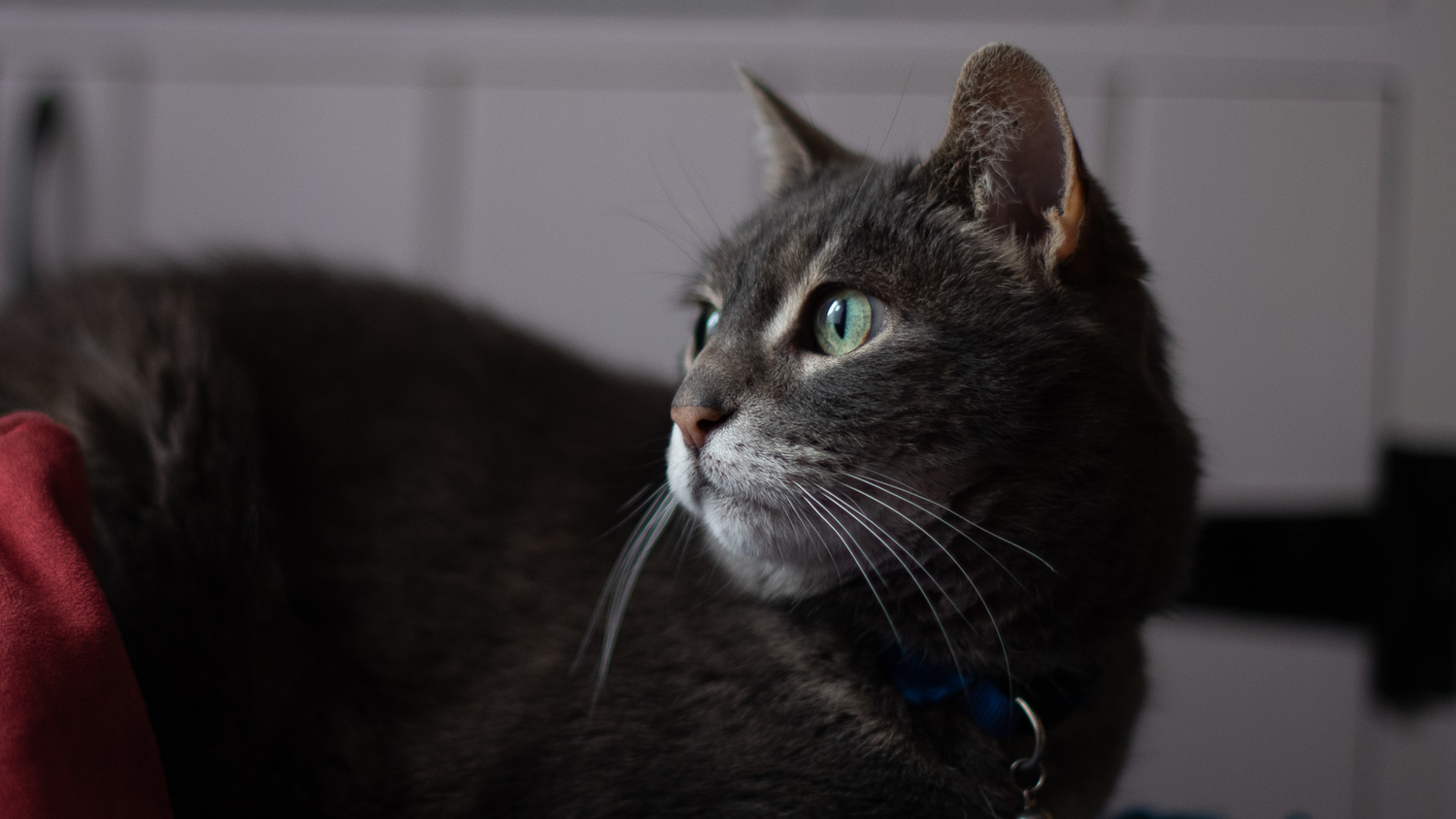Take simple pet portraits at home while you’re self-isolating. All you need is a pet, a window, and some pet treats to grab their attention, then set your camera to aperture priority mode and work on your composition.
Look for the Light

My cat, Aurora, is sitting in front of the lamp here so I've deliberately underexposed the shot to capture a silhouette of her round, chubby face
Position Your Pet Next to the Window

The north-facing window, camera-left, is cascading soft light across Aurora, giving texture and dimensionality to her soft fur.
Bonus tip: Having a hard time getting your pet to stay in one place? It might be a good idea to grab some treats and pop them down where you need your pet to be. Or use a toy if you want their eye contact.
Shoot in Aperture Priority Mode

Shooting in aperture priority mode means you can focus on choosing the depth of field while the camera adjusts shutter speed as light levels change.
It’ll be relatively dark inside, so depending on your light levels you might want to switch on Auto-ISO or ramp it up to ISO 800 or more. That’ll ensure the shutter speed doesn’t drag, causing camera blur. Auto-ISO also has the added benefit of automatically adjusting exposure so you can concentrate on composition and focusing, while the camera produces a good exposure. If you want to under or overexpose a shot in aperture priority mode then use exposure compensation on your camera.

Auto-ISO adds another layer of automatic exposure to the shot, so you can concentrate on composition and focus. This is especially helpful when pets move between bright and dark spots or light levels change.
Focus on the Eyes
 Lastly, it’s important to get the focus right. Focus on the eyes with your autofocus, or use face detection if your camera has this feature. You may want to use manual focus, but if your pet’s particularly fidgety this might be more difficult. Either way, you want to get good focus on the eyes — or if they’re side-on to the camera, focus on the closest eye.
Lastly, it’s important to get the focus right. Focus on the eyes with your autofocus, or use face detection if your camera has this feature. You may want to use manual focus, but if your pet’s particularly fidgety this might be more difficult. Either way, you want to get good focus on the eyes — or if they’re side-on to the camera, focus on the closest eye.
Summary
- Shoot in aperture priority mode (Av mode on Canon)
- Position your pet next to the window for beautiful side light
- Use Auto-ISO or a high ISO to overcome camera shake blur
- Focus on the eyes, or the nearest eye to you
- Under or overexpose your shots intentionally with exposure compensation
We’d love to see your pet portraits so share your favorite images in the comments below with your best tip on how you got the shot. Or perhaps if you've tried the techniques above yourself, why not show us your results below to get some feedback?







:)
My cat in pure light....and perfect position for portrait
Your photo is sideways.
Edit: Nevermind. Has exif "Rotate 270 CW". It appears some browsers follow the instructions some don't. Like FF :)